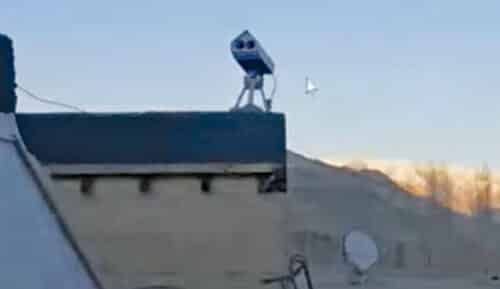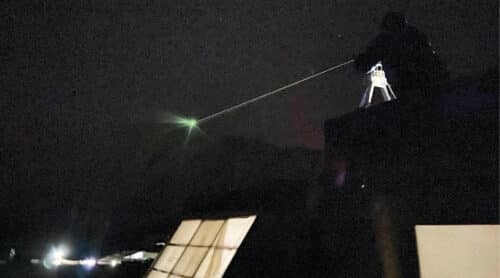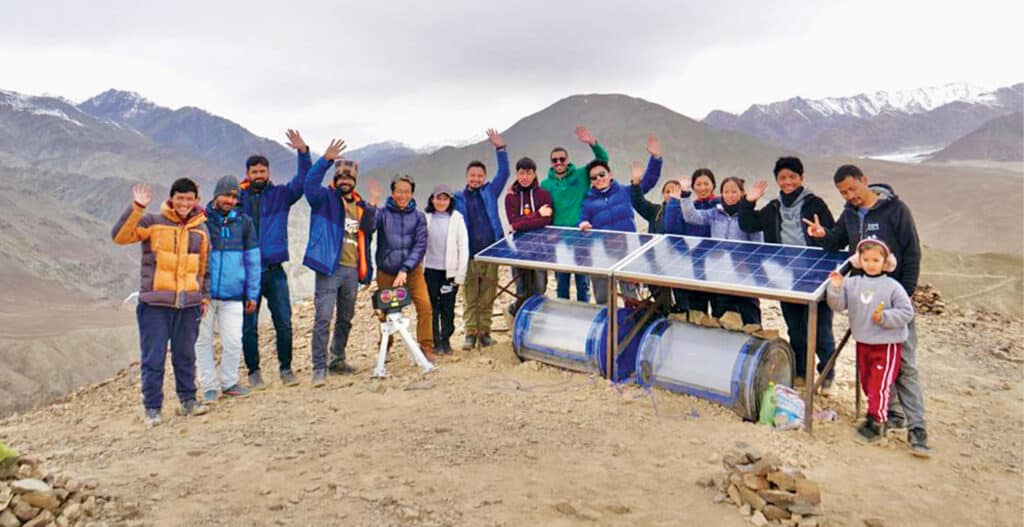While the world wants to indigenise high-tech, Ladakh uses simple, local technologies to solve most of the problems. From solar-powered houses to mountain-to-mountain connectivity, Ladakh shows how simple methods can achieve huge milestones. This is a story not just about sustainable but regenerative development
Living in Ladakh might seem like living in a remote part of the planet, especially when people feel cut-off from rest of the world for up to seven months in a year. With roads blocked due to heavy snow, landlocks exist in Ladakh till May or June every year, showing how remote the place is.
While problems vary from place to place and terrain to terrain, everyone is looking for simple and local solutions here to indigenise and solve them. Sonam Wangchuk from Ladakh believes, it would be interesting to know how the same science is being applied differently in Ladakh. He further explains how new digital technologies can be used to connect mountains, marking a huge milestone in network and connectivity.

Ladakh, located on the northernmost part of India, across the Himalayas, is quite a high and dry place with temperatures ranging from -35°C to +35°C from winter to summer. Situated on the Tibetan plateau—the rooftop of the world—this place is as close as it can get to outer space while still being on planet Earth. In terms of climate, Ladakh is considered a rarity, since when water freezes, problems like freezing, blockages, and bursting open of pipes happen. Yet, Ladakh is a thriving hub of innovation and problem solving.
| “We rescue it (the straw) and save it from polluting Punjab and Delhi. They become insulated blocks in Ladakh that are used to build the solar powered houses, thus cutting pollution in both Punjab and Ladakh.” |
| —Sonam Wangchuk |
Solar-powered houses
The launch of Students’ Educational and Cultural Movement of Ladakh (SECMOL) has enabled children from the mountain range to have hands-on experience and learn things the practical way. Built entirely with mud from under the feet and powered by the sun over the head, this is one of the first schools that has had a zero energy off-grid campus.
With abundant sunshine available almost up to 300 days a year, solar-heated mud houses have been built in Ladakh. Despite their low cost of construction, these houses are efficient enough to provide +18°C environment in a -20°C winter, with nothing but the sun to help.
Himalayan Institute of Alternatives, Ladakh is also working on some local solutions. “One of the interesting experiments is where we’ve built four passive solar-heated (PSH) mud buildings and obtained fascinating results,” according to them.
The graphs in Fig. 2 compare the difference in temperature for a PSH house, a fossil fuel heated building, and those buildings that are not heated. They are represented by the orange, maroon, and bluish-grey lines, respectively. With the month of January being the coldest, the average temperature inside the solar-powered houses ranges from +18 to +25°C, even though the temperature outside is -15°C.

Construction
The PSH buildings are built using straw and clay. The latter is quite abundant in Ladakh, while the former comes from the state of Punjab, where it is seen as a source of pollution when burnt. Sonam says, “We rescue it (straw) and save it from polluting Punjab and Delhi. When the clay and straw are mixed, they become lightweight insulated blocks that are used in Ladakh to build the solar-powered houses, thus cutting pollution in both Punjab and Ladakh.”
The buildings are generally oriented towards the south where the winter sun roams most of the time. Behind the glazing of the southern wall, a dark wall is erected for absorbing the light waves (and the heat), thus capturing the solar energy, and storing it in a sort of no-cost battery that is made of plastic waste bottles. The water in the plastic bottles traps the heat during daytime and releases this heat at night.

To retain the precious heat indoors, a good amount of insulation is required in the three other side walls as well as the roof and floor. This insulating material is made from the wood and wool waste obtained from the Pashmina industry. Their latest experiment is using solar-powered mud principles along with RCC frame structures to obtain the conventional benefits along with solar passive heating.
The amount of oil burned on the Indian borders of China and Pakistan is immense. It is used for heating the army shelters at around 3500 to 4575 metres (11,500 to 15,000 feet) altitude. However, it produces 330,000 tonnes of carbon-dioxide. These are now going solar, with the shelters being redesigned to maintain the room temperature between +12 and +15°C, when the outside world is at -22 to -30°C.
| Using Li-Fi technology, Sonam Wangchuk conducted a live Youtube session on April 1, 2022 and displayed the speed of the internet. |
Ice Stupa artificial glacier
Sonam says, “With global warming melting away glaciers, people laughed when we spoke of artificial glaciers.” The principle is to freeze the stream of winter water that goes unused as there is no farming in that area. A pipe is placed upstream and brought down to where the fields are. Since water tries to flow downwards through the pipe, the water gushes out at lower end of the pipe without any power used. Because of the -20°C or so temperature outside, the water starts freezing in the form of a cone below the pipe, thus forming an Ice Stupa.

Since the Ice Stupa is in a conical shape, it can store a great amount of water, offering a very less surface area for evaporation. As the Ice Stupa slowly melts, the water is stored in a tank and is used for farming using the drip irrigation method.
Sonam adds, “It is simple with no high-technology power. It has become a movement in villages with competitions being held nowadays for the largest and biggest Ice Stupas. This innovation is expanding its borders and spilling outside India into Nepal, Pakistan, Chile, Switzerland, Czech Republic, Europe, and so on—both for aesthetics and winters as well.”
| “The concept of converting mountains to towers and light rays to internet connectivity for remote areas is something to share with people who are working with electronics and technology. “When we suggested mountain-tops as towers, normal telecom companies asked how these would be powered and who would maintain them? Since Li-Fi requires very little power, we made power systems that can be carried and are training an army of shepherds in Li-Fi rather than acquiring professionals from other places.” |
| —Sonam Wangchuk |
Mountain-to-mountain connectivity
The top of a mountain is usually isolated and cut-off with no internet connectivity found. But mountains are the mightiest and biggest structures that can be used to erect towers. Combining this with an interesting technology called Li-Fi, the mountain-to-mountain connectivity can be achieved.

In terms of geography, the signal from the Jio tower cannot be received nor seen at the SECMOL school. However, it can be seen and received on the SECMOL mountain (Li-Fi Tower1 hub), which is at an altitude of 800m. After the signal is captured at the Li-Fi Tower1 hub as a line-of-sight (LOS) propagation from the Jio tower, it transmits the signal to the optical communication unit (Fig. 6) via light modulation (laser beams). This unit is placed on the roof of the SECMOL school and the signal from the Li-Fi Tower1 hub is decoded and converted back to an electrical signal. Hence the signal from the tower can reach remote areas (indirectly), as seen in Fig. 6.

Li-Fi eliminates the cost for digging of optical fibre cables and building of 10-story tall towers. However, powering the towers can be a challenge considering the cold atmosphere on the mountain top. Major telecom providers say that the power required for each tower is up to 7kW. Optical units on the other hand require only 48W.
Just like the solar-heated building, Navtech, HIAL, and SECMOL have developed a solar-heated battery storage device. When the temperatures in the barrel (below the solar panel) were measured, a difference of approx. 61 degrees was obtained. Sonam says, “The temperatures in the night are a minimum of +26 degrees, even while it is a chilling -40 degrees outside. This proved the power system can work unmanned on mountain-tops.”
As shown in Fig. 4, using Li-Fi receivers and transmitters, any signal (example, telecom) can be obtained from a normal tower. When a laser-emitting device is installed on the top of the mountain, any remote village below the neighbouring mountains will have internet connectivity, enabling students to have online classes. “Using this solution, a lot of cost can be saved,” opines Sonam.
The devices used in these innovations are all made in India, in accordance with Atmanirbhar Bharat, with the battery and power system being made in the campus itself. Laser beams have a range of around 10km, but in the thin air at high altitudes the range increases up to 15km (still under testing).
Considering this to be a good distance from one mountain to another, it can also be relayed as an optical fibre cable and used for radio frequency for the valleys below where there is population. The capacity of the laser beam transmission (up to 1GB) will replace digging, power, and expenditure for the hilly areas. The speed remains the same in both optical fibre and laser beam communication.

Considering weather conditions, even though there is rain/snow on rare days, the autonomy of the power system is such that even on cloudy days, photovoltaics would generate sufficient electricity (may be only 30 to 40% of their peak), which would help get through the situation.
This technology is now finding its way with major telecom providers and being used for mountain regions. Hence using Li-Fi receivers and transmitters, signals can be obtained from a normal tower to connect remote villages. Telecom providers need to look into this technology that can help solve many problems.
“Using this solution, a lot of cost can be saved,” says Sonam. In conclusion, he shares, “These are some examples of just to say that indigenisation and localisation of making things in India is truly a proud moment for the country.”
This article is based on the speech given recently by Sonam Wangchuk at the 35th Year VLSI Conference. The article has been transcribed and curated by EFY’s Sharon Abhignya Katta, who is passionate about innovation, especially in the field of telecommunications.
Sonam Wangchuk is a resident of Ladakh and winner of the award for Exceptional Contribution in the Areas of VLSI and Embedded Systems






